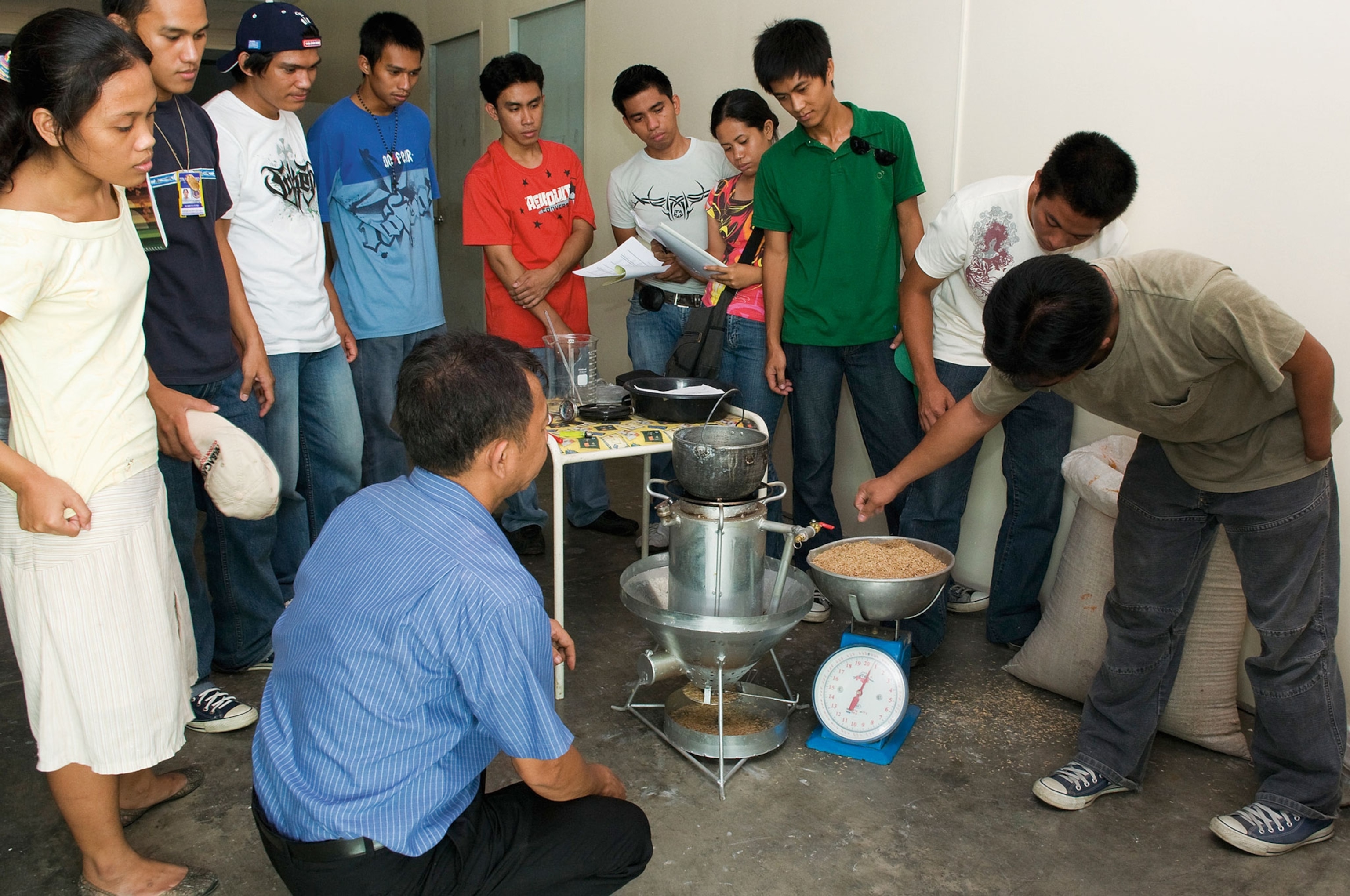
This Cooker Uses Rice Husks as a Cheap, Green Fuel Source
One of the world's big sources of agricultural waste powers Alexis Belonio's cook stoves.
To many, "biofuels" is just a buzzword, holding more promise than practicality.
But not to Alexis Belonio, the Philippines-based inventor who developed an innovative, clean-burning cooking stove fueled by rice husks.
Rice-husk stove technology has been around for decades. It allows users to transform inedible husks—normally dumped or burned after rice is milled—into fuel. But early stoves didn't generate sufficient heat to quickly cook food, and they spewed too much sooty smoke, making inside use unhealthy and dangerous.
Belonio, an engineer, scientist, and tinkerer who had previously designed water pumps and rice paddy dryers, became obsessed with creating a gasified stove in 2003, when the Philippines, which relies heavily on oil and gas imports, was hit with sharply higher energy prices.

Drawing upon wood gasification technology, Belonio spent three years designing a simple albeit revolutionary cooker. It's powered by a small electric or battery-powered base fan that drives air through the husks, converting them into a gaseous blend of methane, oxygen, and carbon dioxide. A metal tube pushes the mixture to a top burner that produces a hot blue flame, similar to natural gas. A pound of rice husks generates about 20 minutes of cooking time, and the greenhouse emissions are about half those of fossil-fueled stoves, Belonio says.
Early rice-husk gas stoves made in the Philippines cost around a hundred dollars, too much for low-income farming families. By simplifying the design and materials, Belonio, a Rolex Laureate, eventually got the price down to about $20. As a primary fuel source, rice husks can save about $150 a year in gas or kerosene costs, or about 10 percent of an improverished family's annual income, Belonio says.
Belonio, who chairs the Agricultural Engineering and Environmental Management department at Central Philippine University, shares his technology in technical manuals and over the Internet, free of charge, enabling people to design and build stoves using their own tools and materials, such as scrap metal.

“To me, there’s such a joy in sharing technology that will benefit others,’’ says Belonio, 56. “I received the knowledge of this stove from God for free, and I must give it away for free.”
Over 40 companies, NGOs, and aid organizations have adopted Belonio's rice-husk stove designs, and they're now used by people in over a dozen countries.
Belonio is still perfecting several designs, including longer burning stoves, commercial variations for restaurants and bakeries, and models where containers of rice husks are burned and swapped out, like propane tanks on gas grills. He’d like to see rice-husk power used widely in heating systems, agricultural equipment, and other devices in rural, off-the-grid regions where fuel remains expensive and not readily available.
Belonio also hopes to design a small, husk-fueled power generator that could be a lifesaver in areas without access to electricity.
“If you can have a device that can provide power for lighting so children can study at night, to charge a cell phone battery or run a motorbike, you have no idea what that could mean to some people,’’ Belonio says. “That is my dream.”





